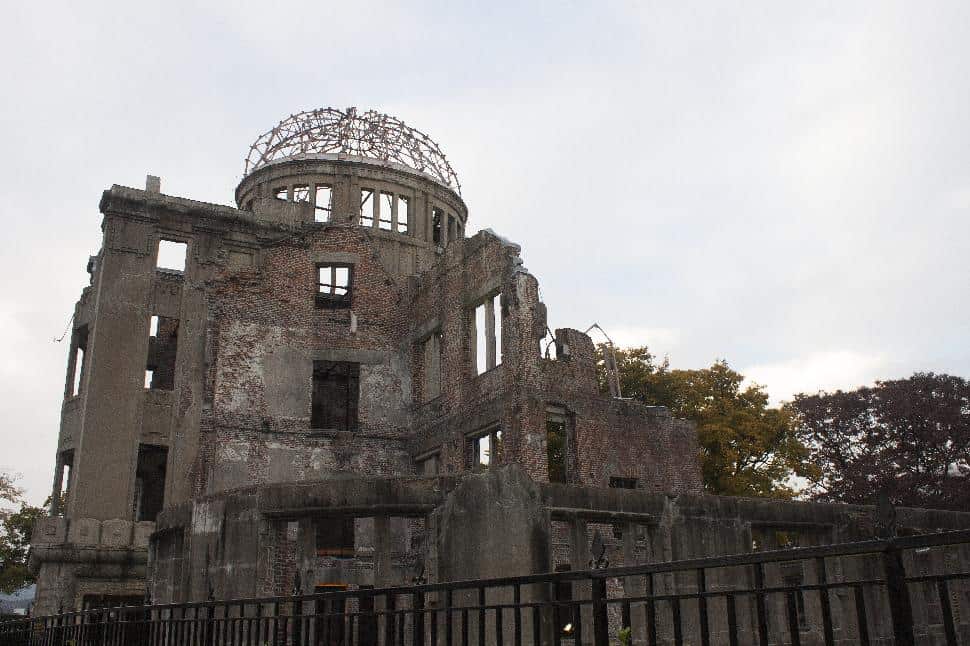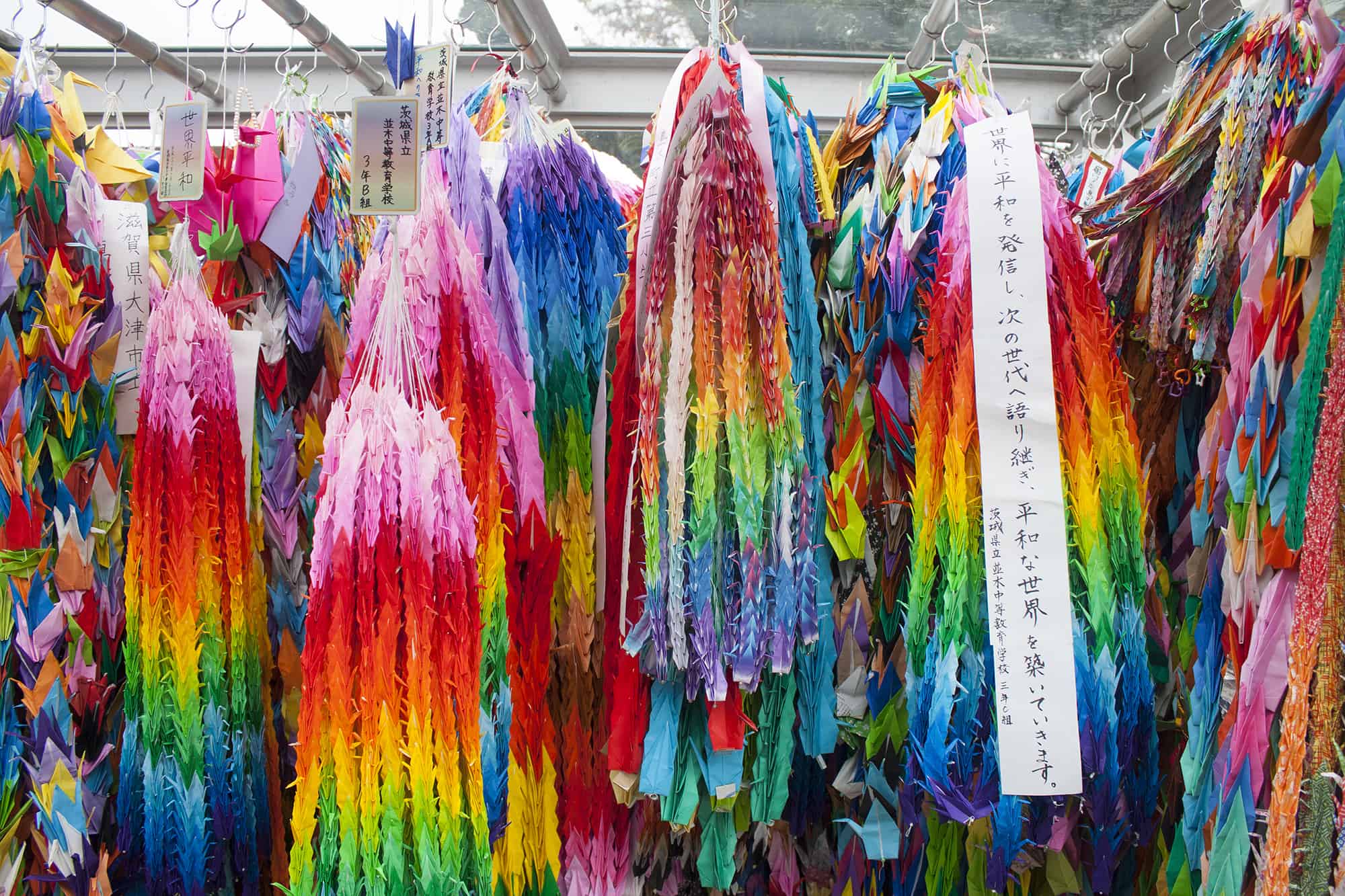On August 6th, 1945, elementary school children were pulled out of classes in Hiroshima, Japan, for military work, to clear the streets for firebreaks, in case of an attack.
At 8:15a.m., the American aircraft Enola Gay dropped the world’s first atomic bomb, Little Boy. A brilliant flash of light echoed over the hypocenter, followed by a sinister mushroom cloud. The intense heat instantly incinerated tens of thousands of people. Disfigured corpses were piled beneath rubble; shadows of humans were imprinted onto concrete. Half-alive victims stumbled around like ghosts, strips of flesh hanging off their arms and faces. Everything was on fire. The thick cloud began to pour black rain, which gathered into radioactive puddles. Burn victims lapped up the murky water into their paper-dry throats before succumbing to their painful deaths.
It was a horrific day.
The remains of that massacre have now become a tourist attraction. Known as dark tourism, it’s a trend that brings war and history to the forefront of a tourist’s mind. While it is controversial for commercializing tragic events, it is also undeniably effective. Dark tourism transports travellers out of their oblivious vacation-mode and places them in an uncomfortable reality, which reveals that the world is not all architectural attractions, cultural traditions, delicious food and white-sand beaches.
Arriving in Hiroshima, Japan
My travel companions and I arrived at the JR Station in Hiroshima and headed straight for the sightseeing loop bus, which was free with our JR passes.
The bus stops at the A-Bomb Dome, Hiroshima Peace Memorial Museum, Hiroshima Castle and Hiroshima City Museum of Contemporary Art. The majority of the attractions related to the atomic bomb are within walking distance. It feels a little weird to consider this disaster zone a place to purchase souvenirs and take selfies like we would at the Eifel tower in Paris or the Taj Mahal in Agra.
As we drive, I stare out the window. We pass an expensive-looking department store and a dusty outdoor food market. I’m shocked by how new the buildings look, but of course they do. Hiroshima had to be completely rebuilt after the war.
It all seems to sharply contrast the hypocenter, where a single raw building stands like a lone-surviving skeleton.
Dark Tourism Attractions
A-Bomb Dome
 Alison Karlene Hodgins
Alison Karlene Hodgins
When the atomic bomb exploded above Aioi Bridge, neither the bridge nor the building next to it was destroyed. The blast blazed through the building, instantly killing everyone inside. It left a wire metal frame and scarred brick walls. The City of Hiroshima has preserved it as a symbol of peace.
Children’s Peace Monument
Thousands of colourful paper cranes are encased in glass around a statue dedicated to Sadako Sasaki, a symbol of the many child victims that suffered because of the atomic bomb. Sadako died of leukemia from radiation at the age of 12—ten years after Little Boy obliterated Hiroshima.
 Alison Karlene Hodgins
Alison Karlene Hodgins
Hiroshima Peace Memorial Park
Once a busy, prosperous area, this public park is quiet and somber. In the center of the park, the Memorial Cenotaph carries an epitaph that reads: “please rest in peace, for we/they shall not repeat the error.” An everlasting flame flickers near the saddle-shaped monument; it will only be extinguished when the world has no more nuclear weapons.
 Alison Karlene Hodgins
Alison Karlene Hodgins
Monuments to victims are scattered throughout the park. Elderly couples walk along the river, their gazes far away. My mom rings the Bell for World Peace. The dull vibrations ring across the otherwise silent park.
 Alison Karlene Hodgins
Alison Karlene Hodgins
Hiroshima Peace Memorial Museum
 Alison Karlene Hodgins
Alison Karlene Hodgins
This informative museum is both heartbreaking and chilling. Admission is 50 yen for adults and 30 yen for students.
The solemn chamber echoes with choked sobs and sharp inhales. I feel bad, guilty even, for being a white North American tourist surrounded by Japanese pain. Looking at the pictures, artifacts and life-sized displays makes my skin crawl. It’s hard to comprehend the amount of pain, suffering, death and disease caused by this one bomb.
Where to from here?
One would hope that by seeing such disaster, we would learn from our mistakes. Unfortunately, history tends to repeat itself. Three short days after dropping the world’s first atomic bomb, the U.S. dropped another one on Nagasaki.
I was surprised that Japanese war crimes committed by soldiers in Korea, China and South East Asia, or the imprudent decision to destroy Pearl Harbour, were omitted from the history told at the memorials. I’ve also visited Pearl Harbour, and both sites claim victim status. It is tragic that too often we claim to be either the victors or the victims. But all of the survivors have a similar call: for peace.
Hopefully the world will listen.
Other unusual disaster sites you can visit around the world:
1. Chernobyl, Ukraine
2. Auschwitz Concentration Camp, Poland
3. Serial Killer Dorothea Puente’s home in California, USA
4. Tuol Sleng Genocide Museum, Cambodia
5. Robben Island Prison Museum, South Africa
Have you ever visited a dark tourism site?
Share your experience in a comment below or tweet us!
More Japan on Canadian Traveller...


